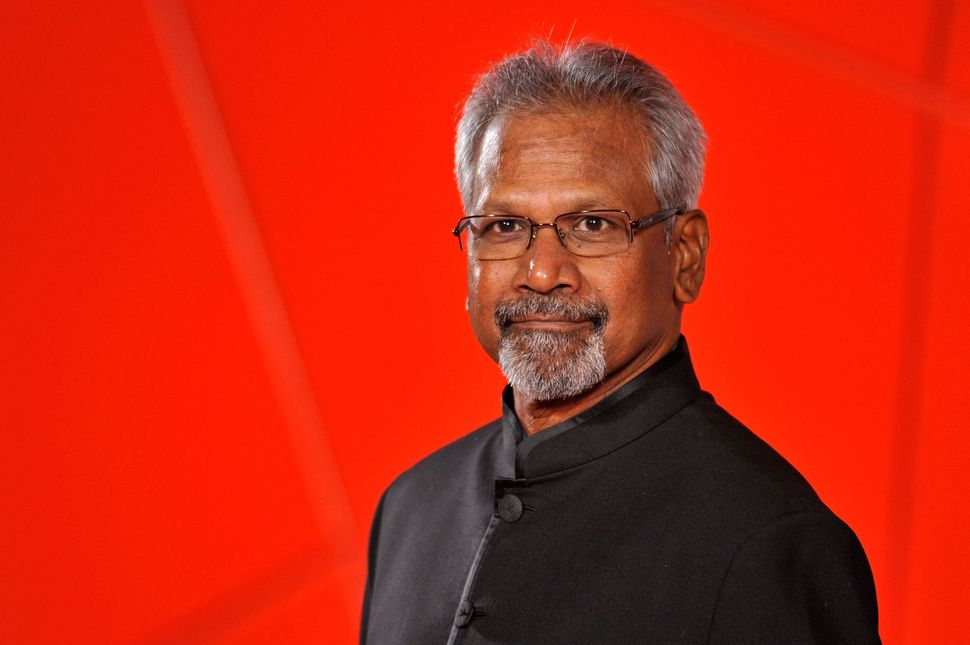
In July 2019, an open letter was written by 49 celebrities to Prime Minister Narendra Modi that included eminent filmmakers and actors expressing concern over the growing incidents of mob violence. While it was reported that filmmaker Mani Ratnam too was one of the signatories of the letter, there were some conflicting reports about the authenticity of his signature. But after some initial confusion, it was established that Mani Ratnam did sign the letter. The open letter resulted in a sedition charge filed against all the 49 ‘pro left-liberals’ in October 2019 at Bihar’s Muzaffarpur for “tarnishing the image of the nation”.
Much earlier, in April 2017, during the release of his film Kaatru Veliyidai (2017), Mani Ratnam was interviewed by News 18 Tamil Nadu’s then Chief Editor M Gunesekaran. During the interview, Gunasekaran questioned the influence of the Dravidian movement on Mani Ratnam by quoting the filmmaker’s comment from Baradwaj Rangan’s book Conversations with Mani Ratnam.
The filmmaker had said, “To have something like the rationalist movement was fantastic – it really stood up for the backward. It opened your mind…...Two things were very, very important in my formative years – the thinking of the Dravidian movement, which was such a strong movement, and the increased potency of the film medium.” Ratnam responded by reinforcing his comment in the book and agreed that the 50 years of governance by the Dravidian parties has put the state on a progressive path.
These two unrelated incidents corroborate the general public belief around the politics of Mani Ratnam – that he is left leaning with a soft corner for the Dravidian movement. While a few academic scholars might have made arguments contrary to this popular belief, particularly with respect to the politics of Roja (1992) and Bombay (1995), the public perception around Mani Ratnam continues to remain that of ‘left-liberal’ politics.
However, if we critically look at his filmography in totality, it is not difficult to observe the recurring occurrence of themes in favour of hyper-nationalism, anti-federalism and state oppression. And contrary to popular opinion, the filmmaker’s ideology seems to have more similarities with the Hindutva politics of RSS, BJP and other right-wing organisations of the Sangh Parivar than anything else.
Recurring themes of Hyper-Nationalism
In September 2016, the Supreme court passed an order that made it mandatory to play the national anthem in cinema halls before movie screenings. This invariably resulted in a series of dramatic incidents.
The cinema hall that is generally considered a space for entertainment, freedom and relaxation suddenly became a battleground where hyper nationalist right-wingers were judging everyone’s ‘Indian-ness’ or rather, ‘anti-Indian-ness’. There were several reports from across the country on how right-wing mobs heckled, harassed and booed those who did not stand up for the national anthem. In one shocking case, a disability activist who has been using a wheelchair for almost four decades was assaulted.
This violent form of hyper-nationalism that cloaks itself as righteous patriotism is exactly what gave birth to Mani Ratnam’s first political film Roja. Amusingly, the filmmaker acknowledged this in his own words. At the silver jubilee celebration event of Roja, Mani Ratnam disclosed that the film germinated from a scene in K Balachander’s Apoorva Ragangal (1975), where the protagonist violently punched someone who is found to be chewing gum when the national anthem plays.
So it is not surprising that Roja’s politics too reflects a similar hypernationalist sentiment. Until then, Kashmir or its politics didn’t particularly exist in the popular public discourse of Tamil Nadu. But the way the movie was crafted, packaged and released created a feverish anxiety among its audience on India’s territorial control across its borders. The movie was released on the Independence Day of 1992 and went on to win the national award for the ‘Best feature film on National Integration’.
It is important to understand here the timing of the film’s release. Made immediately after the assassination of Rajiv Gandhi, it was a period when there were increased frenzy on the possibility of Tamil Eelam’s independence from Sri Lanka and the influence it can have on Tamil Nadu and its relationship with the Indian state. Mani Ratnam capitalized this prevailing mood but instead of making a film on the Tamil nationalist aspirations, he directed the focus to Kashmir for a pan Indian appeal.
The film staged several moments that deliberately aroused jingoistic feelings among viewers who otherwise had no strong opinion on Kashmir or its conflicts. It included repeated assertions over the land of Kashmir while glossing over the Kashmiris’ right to self-determination, another scene where the protagonist saves an Indian flag from being burnt and a concluding song that provoked Tamils to stake their claim over Kashmir in the name of nationhood. The film was dubbed into several other languages and it created a similar furore in those markets as well.
This tendency to play to the hyper-nationalist tendencies of the right-wing forces continued in Mani Ratnam’s other films as well. Dil Se (1998) begins in Assam and attempts to generically focus on the self-determination movements of the North-East. But strangely, it moves the story soon to Ladakh to reveal that the female protagonist is part of a liberationist group that is planning suicide-attacks in the capital on Republic day.
The reference to a suicide bomber is a clear allusion to the Black Tigers, a wing of the Liberation Tigers of Tamil Eelam (LTTE). So essentially, the film creates a potpourri of conflict in three different zones – North Eastern states, Kashmir and the Tamil parts of Sri Lanka, only to address the territorial anxieties of the Indian state across its northern, eastern and southern borders.
Even if one could argue that Roja or Dil Se were a nationalist response to the conflict in the corresponding zones in the 90s, it is befuddling why Mani Ratnam continued with the jingoistic screech in Kaatru Veliyidai (2017) as well. Narrating the ups and downs of an abusive romantic relationship between a Tamil couple, an Indian Air Force fighter jet pilot and a doctor, the story was based in Kashmir. It remains bizarre why a film about a Tamil couple was set in Kashmir because the only Kashmiris who appear in the film are the inconsequential female domestic workers in the protagonists’ homes and they too appear only for fleeting moments.
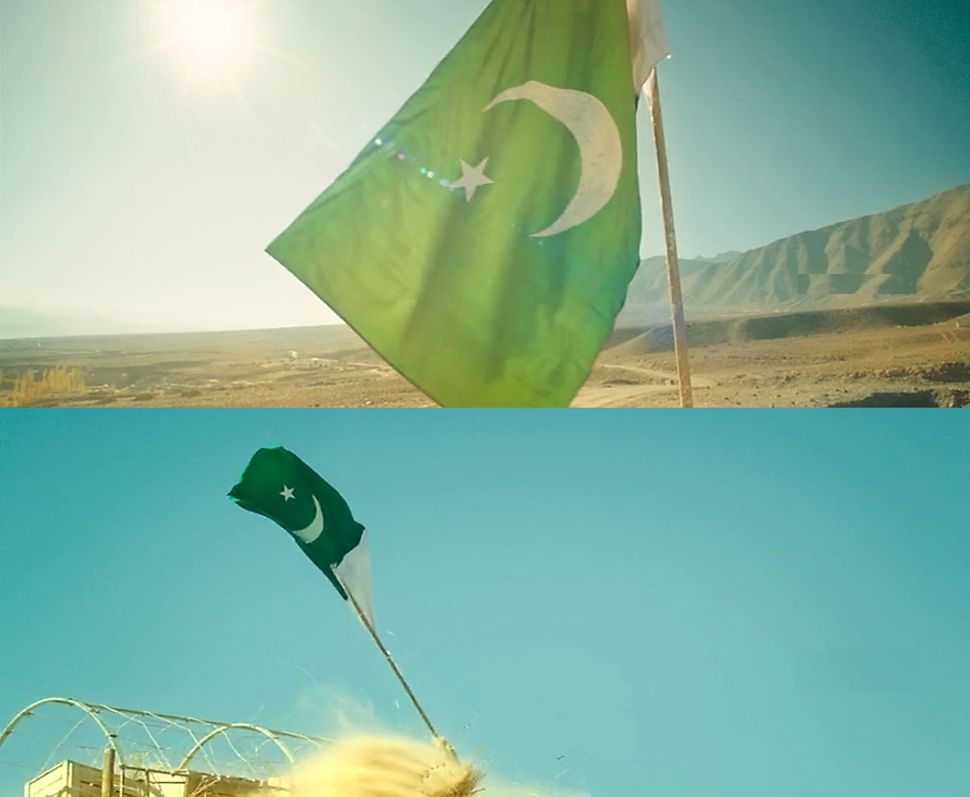
During an air-raid, the jet pilot is captured and imprisoned as a PoW in Pakistan and the story follows his escape from the prison. During the escape, Mani Ratnam intentionally stages a dramatic scene where the protagonist’s truck hits a pole that has hoisted the Pakistan flag and brings it down. This interestingly coincided at a time when even the faintest critical voice against the BJP Government at the centre were labelled as ‘anti-Indian’ or ‘Pakistani agent’ and was asked to ‘go to Pakistan’.
Schooling and ‘Secularising’ the Muslim
One of the key goals of the RSS and BJP has been to implement the uniform civil code. Their relentless campaign that began in the 1970s with the Shah Bano case to pass the Triple Talaq bill bore fruit in July 2019. While the Government hailed it as a victory for gender justice, it was heavily critiqued by several civil society members who called it a charade and labelled it as an anti-minority law. One of the key politics of the right-wing has been to school and ‘secularize’ the Muslims in the country and make them palatable for the Hindu hegemonic forces.
In Bombay, Mani Ratnam presented the Hindu-Muslim binary through the eyes of the Hindu majority. While outwardly, the movie appears progressive in its depiction of an inter-religious couple who are in love with each other, the agency to pursue the romance or marriage is offered only to the Hindu upper caste man. It is only with his help; the Muslim woman is able to escape her violent patriarchal home. In a carefully constructed moment in the song ‘Uyire Uyire’, the woman is forced to let go of her burqa that is holding her back from reaching out to the man she desires. This scene foretells the story that would unravel, where the conservative and religious Muslim woman is assimilated into the Hindu society in the guise of secularism.
The movie follows the couple to the city of Mumbai and captures the turbulence their family faces in the midst of the ‘Bombay riots of 1992’ that took place after the demolition of Babri Masjid. The Srikrishna Commission’s report on the Mumbai riots indicted the Shiv Sena, and held it responsible for orchestrating the bloodshed in the city.
The movie however portrays the events much differently. While Mani Ratnam had to edit out scenes that directly implicated the Shiv Sena to ensure the smooth release of the film, the narrative still marks Muslims as the instigators of both the first and second phases of violence.
However, the role of the Hindu groups remains either indistinct or at best only portrayed as retaliation. At best, the film chooses to take a calculated ‘balanced approach’ and holds both sides equally responsible for the violence that ensued. While the Muslims were majorly at the receiving end of these riots, the climax of the film advises both sides to give up their politics of hate and attempts to evoke a universal sense of brotherhood.
If Bombay attempted to secularize the Muslim, in Roja, the movie speaks in favour of the Kashmiri Pandits and nudges the Kashmiri Muslims to embrace their humanity. In the climax scene, the Kashmiri separatist leader sets the upper caste Tamil hostage free and awkwardly thanks him for ‘bringing a change of heart in a terrorist’. Here too, the position taken by the filmmaker is very similar to that of the RSS and BJP where he speaks through the victimhood of Kashmiri Pandits.
Vulgarizing the Dravidian movement
In the last several years, the RSS and BJP have aggressively been trying to appropriate Dr. BR Ambedkar in an attempt to woo the votes of Dalits. However, when it comes to Periyar EV Ramasamy, they stay away from attempting such strategies. This is primarily because the success of the Dravidian movement has already resulted in the consolidation of the masses by the Dravidian parties – Dravida Munnetra Kazhagam (DMK) and All India Anna Dravida Munnetra Kazhagam (AIADMK). Because it is futile to appropriate Periyar, the right-wing organizations vociferously attack and denounce him and the Dravidian movement in an effort to delegitimize their contributions.

Mani Ratnam too attempted a similar strategy in Iruvar (Two people) (1997), where he completely disfigured the ideological force of the Dravidian movement. The movement at its very core was an anti-caste struggle spearheaded by the masses against the Brahmanical hegemonic forces and sought equal opportunities for everyone.
But in Iruvar that broadly follows the rise of Kalaignar M Karunanidhi and MG Ramachandran, Mani Ratnam almost erased the anti-caste characteristic of the movement. Instead, in the guise of critiquing the corruptive nature of power, he placed too much focus on the romantic and sexual escapades of these leaders.
Even here, it is Kalaignar M Karunanidhi who is portrayed as the ruthless and power hungry leader who doesn’t think twice before using his party cadres to fix his romantic affairs.
The character of MG Ramachandran is however represented in a much kinder manner. He comes across as someone who understands the pain and hunger of the poor and his rise to power seems more natural in comparison to the manipulative tactics employed by the character of M Karunanidhi.
The fact that MG Ramachandran received an aggrandized treatment while M Karunanidhi is met with vilification is not necessarily surprising. Because, in spite of the emergence of MG Ramachandran in continuation of the Dravidian politics in the state, he has had several things in common with the RSS or BJP.
To cite a glaring example, he was one of the earliest people in the country to attempt introducing an economic based reservation for the upper castes, which he later withdrew after his party’s virtual rout in the Lok Sabha polls of 1980. This very same policy was brought in force recently by the BJP government as the 10 per cent reservation in higher education and government jobs for economically weaker sections among the general category.
Also, apart from erasing the anti-caste characteristic of the movement, the anti-Hindi agitation of the DMK is reduced to a momentary prop to aid the meeting between M Karunanidhi and a potential romantic partner. This reduction of the self-respect and Dravidian movements that worked for the most backward and marginalized sections of the society to mere romantic and sexual excesses of individuals reeked of vulgarity. Essentially, the film’s sole purpose seemed to trivialize the movement and take away the high regard it evoked in the eyes of the public.
Puncturing the potency of the Left
In spite of the left-liberal image that is often bestowed on him, Mani Ratnam has been mostly critical of the Left’s role in politics. The only times it has been represented in a somewhat positive light is when it is pitched against the Dravidian parties and their politics. Although not written by him, his very second film Unaru (1984) focussed on the corruption in the trade unions and how they eventually serve only the interests of those at the top.
In Aaytha Ezhuthu (2004) (Yuva in Hindi), he modelled the protagonist Michael Vasanth after George Reddy, a Marxist student leader at Osmania University. However, while borrowing from the real life character, Mani Ratnam stuck to mere superficial details and threw away the radical politics of the student leader who fought for the rights of the poor and women students, both on campus and outside. However, he was later killed by pro-feudal, right-wing forces on the campus.
Mani Ratnam’s recreation of George Reddy didn’t go beyond encouraging the elite educated to give up their Green Card dreams and participate in the electoral process, which more accurately resembled the beginning of the Aam Aadmi Party (AAP) than any shade of the Left.
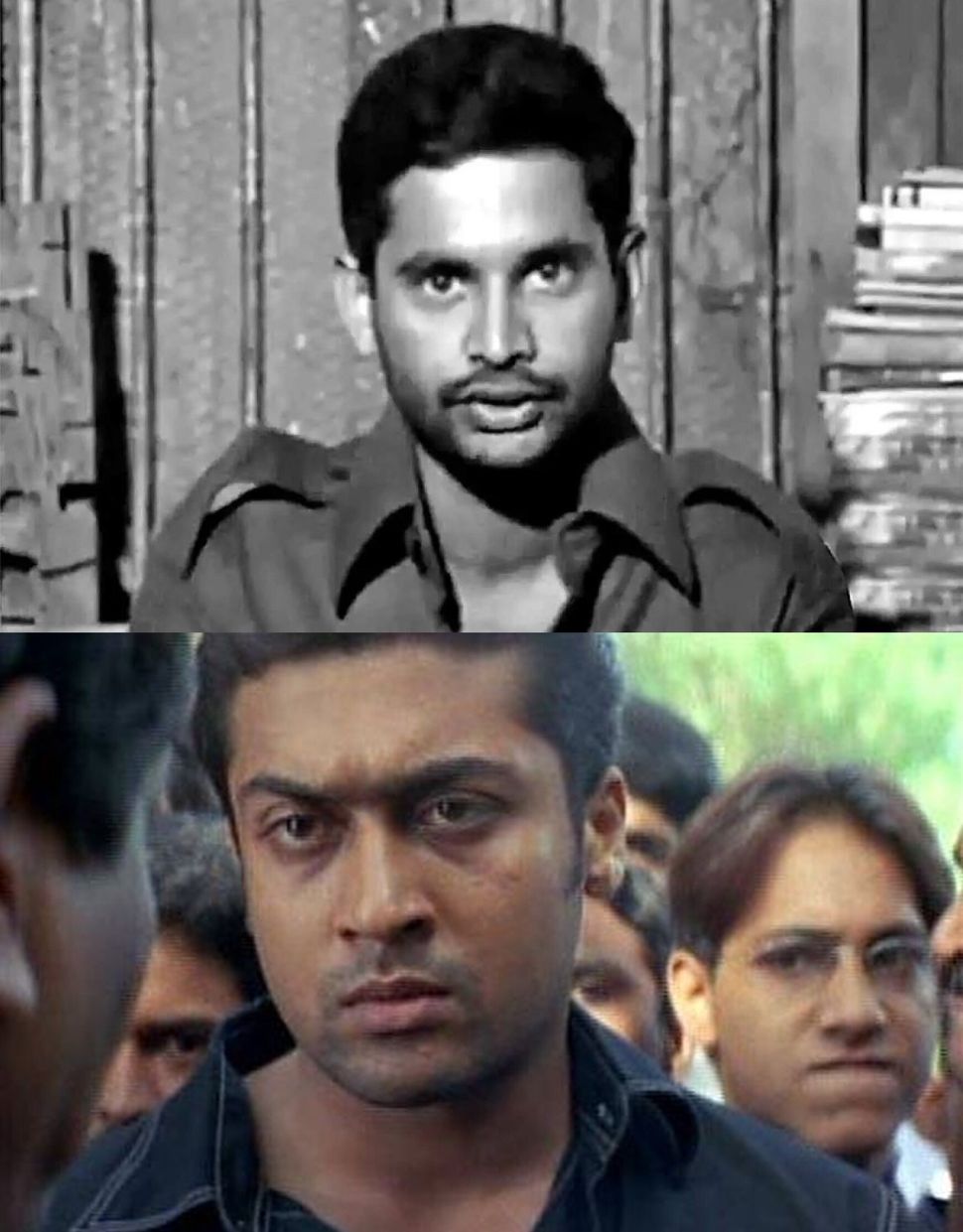
Again here, Mani Ratnam placed George Reddy’s diluted clone against the Dravidian leader and DMK’s first Chief Minister CN Annadurai. The character representing him wears a black shirt that is associated with Periyarists and utters a rhetoric that is very identical to CN Annadurai’s popular quote “Vadakku vazhgirathu, therku theigirathu!” (The North shines and the South wanes). Annadurai was fondly called as ‘Anna’ (Elder brother) by his party cadres and followers, but the same term is used here in a mocking way.
But beyond the caricaturing of CN Annadurai, Mani Ratnam also portrayed his party as extremely corrupt and accused it of using muscle and money power to mobilize the masses. While in reality, the early years of the DMK saw the politicization of youngsters who joined the party in large numbers, Mani Ratnam portrays the party as being insecure about the politicization of youngsters that it goes to the extent of violently suppressing the emergence of any alternate voice.
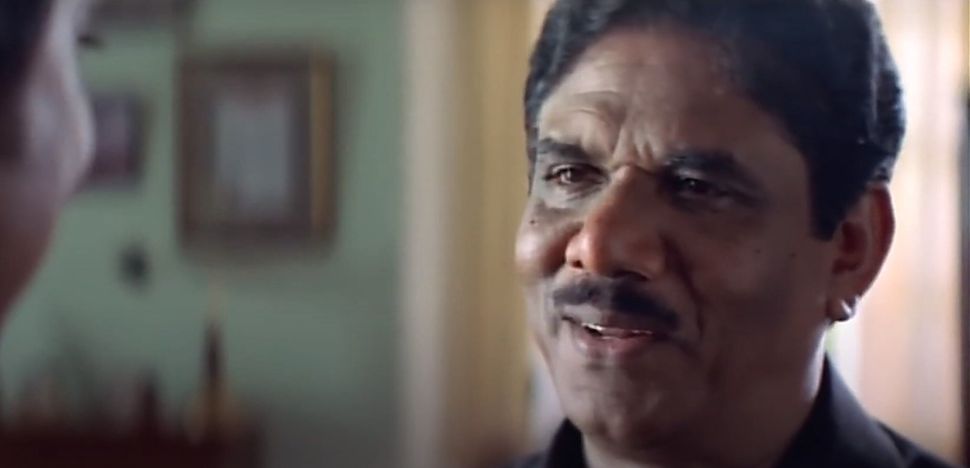
This placing of the Left and the Dravidian parties against each other has happened much earlier in Mani Ratnam’s filmography. In the flashback sequence in Mouna Ragam (1986), the female protagonist’s boyfriend is shown as a Left rebel. His very opening shot involves beating up a rich brat who is supposedly the son of Tamilmani, a Member of Parliament.
The deliberate choice of the name ‘Tamilmani’ is again a reference to a Dravidian party member. But ironically, much later in the movie, the female protagonist’s husband, a HR manager is violently attacked by a union worker for being suspended from work. While Mani Ratnam seems to recurrently portray the Left and Dravidian movements as violent and corrupt, the Left seems to get a relatively less harsh treatment.
But in extreme contrast, the life of a relentless capitalist like Dhirubhai Ambani was romanticized and glorified in Guru (2007). The series of law bending and law breaking strategies that aided the rise of the Reliance industries is portrayed in the film as the spirit of the human endeavour that rose above the Licence Raj.
Unlike the Tatas or Birlas who were successful in creating a positive public image around themselves, the rise of the Ambanis coincided with heavy criticism that labelled them as ‘crony capitalists’. However, Mani Ratnam’s film on Dhirubhai Ambani unapologetically venerated the businessman and continues to play an important role in creating a positive image about him and his organisation.
Amusingly, the film was produced and distributed by Reliance Entertainment along with Mani Ratnam’s Madras Talkies.
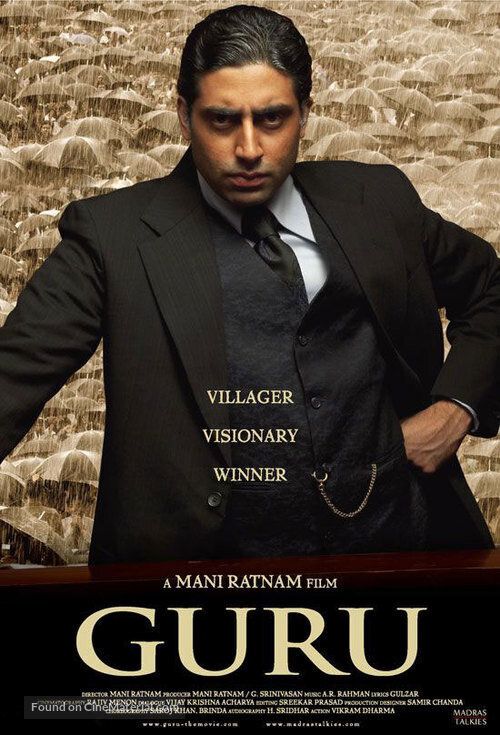
In Ravanan (2010) (Ravan in Hindi), Mani Ratnam narrates a kidnapping and rescue story that is inspired from Ramayana’s plot. Except, this time he sets it in an interior forest in central India that is populated by Adivasis. Here, the film insinuates a backdrop where Naxalite–Maoist groups are in conflict with the Indian state.
But then, this very narrative of force fitting the Ramayana on the lives of Adivasis is very identical to the ideological project of the Sangh Parivar. The Sangh Parivar recasts Adivasis as vanvasis and attempts to ‘bring them back’ to Hindu faith and ‘checks’ their conversions to Christianity.
There are even reports that point to the fact that Seva Bharati, a right-wing organisation has trained Adivasi youngsters on ‘Shri RamKatha Pravachan’ (discourses of Ramayan).
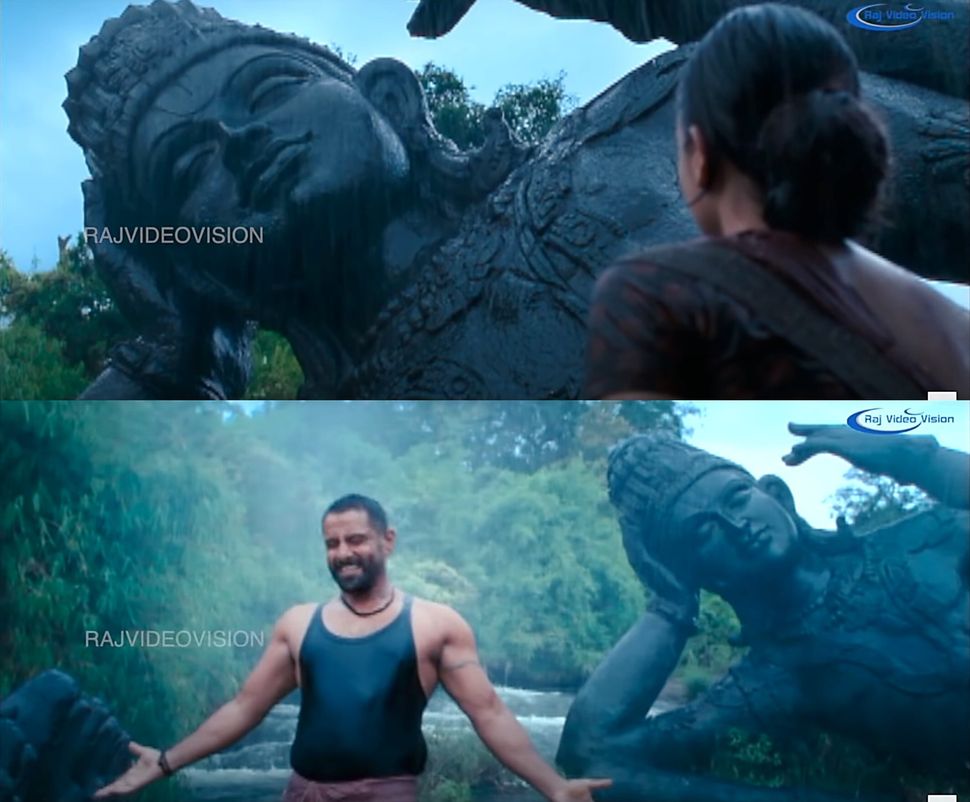
While Mani Ratnam’s film is silent on the state’s repression in the conflict zones or the livelihood issues faced by the Adivasis, it fits perfectly in the Sangh Parivar’s project of ‘Hinduizing’ the Adivasis for greater national integration.
From Indian Nationalism to Sinhalese Nationalism
If almost all political films by the filmmaker were unabashed nationalist projects, he switched to Sinhalese Nationalism in Kannathil Muthamittal (2002). Set against the Tamil’s fight for a homeland in Sri Lanka, the film follows a young girl and her adoptive parents from Chennai who go in search of her biological mother in the Tamil parts of Sri Lanka.
The movie portrays the Tamils’ struggle as though it is only filled with suicide bombers and child soldiers. Beyond the representation of violence, death and displacement, the movie comments nothing about the rise of Sinhalese fascism or the oppressing role the Sri Lankan army played in forcing the Tamils to take up arms. In fact, the only Sinhalese character that appears in the film is portrayed as an extremely kind and generous individual who goes out of his way to be nice to the Indian Tamil family.
In an important conversation between the Indian adoptive father and the Sinhalese man, the film accuses the arms producing western nations for the internal war in Sri Lanka and other similar nations. By shifting the blame to unnamed western nations, the film in one stroke exonerates the role of successive Sri Lankan Governments, Sinhalese-Buddhist nationalists and the Sinhalese public in othering the Tamils in their own land.
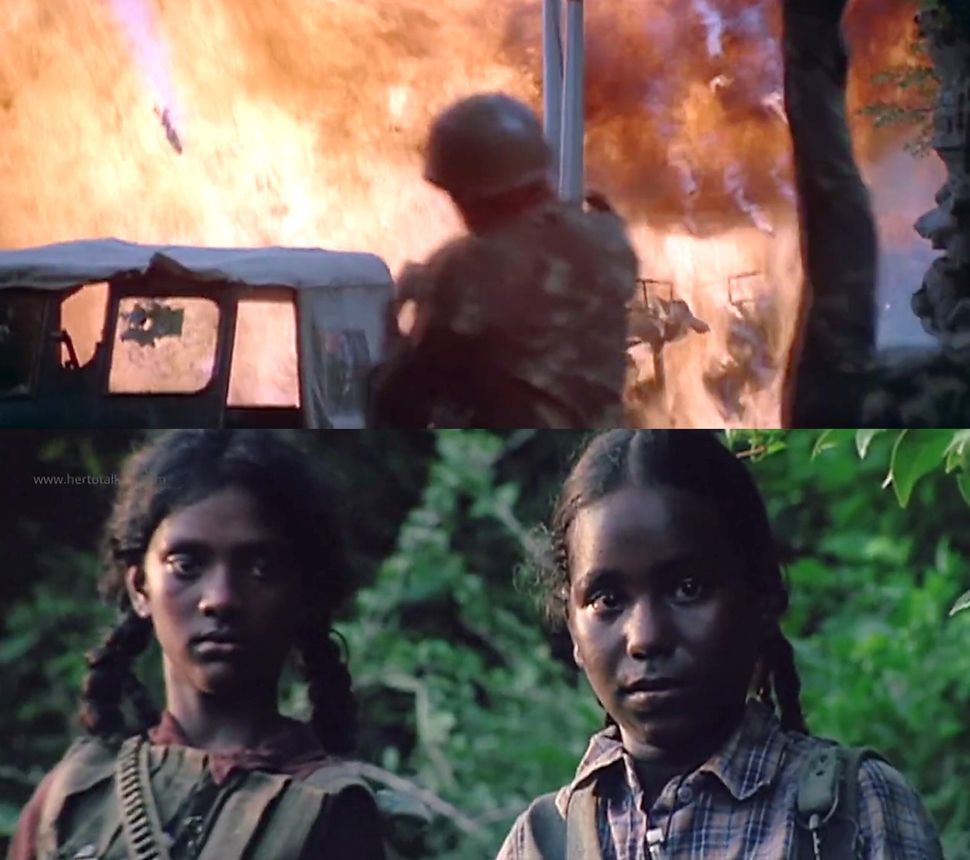
Talking about the film in Conversations with Mani Ratnam, the filmmaker shockingly refers to Tamils in Sri Lanka as a ‘group of outsiders’ whose entry into a nation has created turmoil. This is in tandem with the Sinhalese fascist argument that the Sinhalese are the only ethnic population whereas the Tamils are outsiders. But in reality, the Tamil population of Sri Lanka is made up of both ethnic Tamils and Indian Tamils, where the latter migrated as workers in the coffee, tea and rubber plantations.
In speaking the language of the Sri Lankan Government, Mani Ratnam indirectly represents the Indian State. The diffusion of the Tamil nationalist narrative in the Indian ocean is important for the State to maintain its territorial stability and authority. And Kannathil Muthamittal serves this purpose by distorting the Tamil’s struggle for freedom in the island nation.
Caste and Endogamy
While the RSS and BJP have been posturing themselves against untouchability and other caste based discriminations, they continue to uphold the Varnasharma Dharma as it is considered intrinsic and vital to the Hindu religion. The adherence to Varnasharma Dharma results in a society that is fiercely endogamous in all its social affiliations and activities including marriage.
Though the romantic films of Mani Ratnam are classified as classics, they ennoble endogamous unions. In Mouna Ragam (1986), he captures the coming together of a Brahmin couple in an arranged marriage. And in Alai Payuthey (2000), he portrays two mostly Brahmin-Savarna individuals from different classes who have fallen in love with each other and marry against their parent’s wishes.
It is only in O Kadhal Kanmani (2015), the woman is shown as a Gounder, a non-Brahmin landed caste though the man remains Brahmin. But even here, the live-in relationship is made possible between the couple only after the woman convinces the landlord of her Carnatic singing abilities. Coincidentally, even in Alai Payuthey, during the woman’s first entry to the man’s house, she belts out a popular Carnatic song. While Bombay did explore the relationship of an inter-religious couple, the romance in most of his other films have clearly been endogamous and stuck to Brahmin-Savarna traditions.
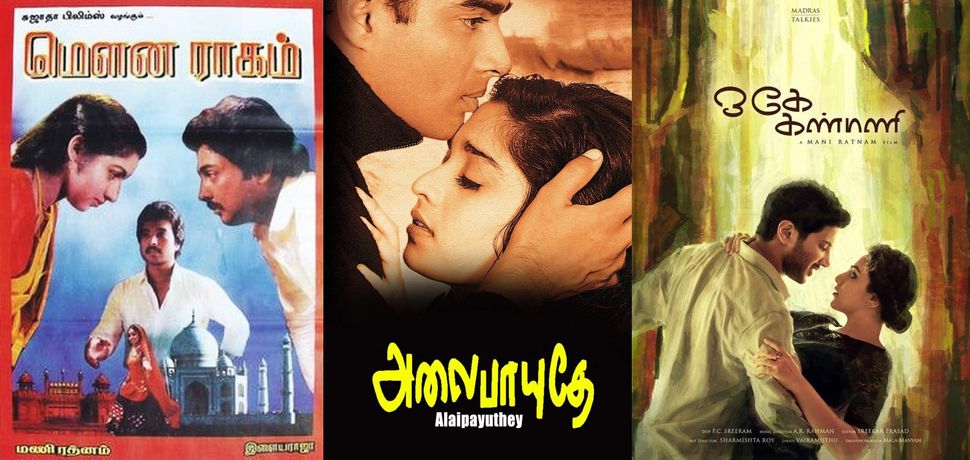
In Indira (1995), directed by Suhasini Mani Ratnam and screenplay co-written by Mani Ratnam, the film follows the politicization of a young Dalit woman and her rise to represent her community. Here, the film strips off the Dalit woman’s social reality and presents her characteristics as though she belongs to a Brahmin or Savarna caste.
The spoken language, clothes worn, housing set up and the cultural traits of the character and the people around her remain completely Brahminical even while we are repeatedly told that they are from a lower caste. The Dalits here are placed against the intermediate castes. While the movie makes no effort to understand or comment on the material differences that lead to the conflict between these two groups, it broadly portrays the intermediate castes as violent and murderous casteists.
But ironically, for a film that is attempting to tell the story of a Dalit woman, Indira stages a particular scene where students are seen applying for admission in a nearby college and the film mocks reservation and paints an upper caste candidate as a victim.
In Nayakan (1986), Mani Ratnam narrates the story of Velu Nayakar, based on Mumbai’s underworld Tamil don Varadarajan Mudaliar. Here, the film Hinduizes the culture of Dharavi, a locality populated primarily by the lower castes and classes, through the recurring portrayal of Hindu God images and festivals.
Spokesperson for Akhand Bharat
The politics of Mani Ratnam’s films invariably sum up the politics of Akhand Bharat. He has continuously made efforts to contemporize the epics Mahabharata and Ramayana through his films Thalapathi (1991), Roja (1992) and Ravanan (2010) and make them relevant to a younger population. In Roja and Dil Se (1998), he has captured the border anxieties of the Indian state. And in Ravanan, the problem of insurgency was seen through the eyes of the state. In Kannathil Muthamittal (2002) and Kaatru Veliyidai (2017), the foreign policy of the Indian state with respect to its immediate neighbours has been reiterated in varying degrees.
While the question of caste has been completely absent throughout his filmography, the Dalit-Bahujans of Dharavi and the Adivasis of central India have been Hinduised. The Hindu-Muslim binary was evoked in Bombay (1995) but only to paint the Muslim as an aggressor. The Dravidian movement that championed federalism and the Left movement that brought the plight of workers to the fore have been caricatured, while ruthless capitalism has been romanticized.
The Dangers of Beautiful Art
In his essay The Worst Thing About “Birth of a Nation” Is How Good It Is for The New Yorker, film critic Richard Brody writes about the dangers of problematic politics and how it is made effective by brilliant filmmaking. He argues that while DW Griffith’s film Birth of a Nation (1915) was repugnantly racist, it has become difficult almost impossible to ignore it for how it marries inventive cinema with shocking injustice. Add to the fact that the film also offers some humanly profound moments.
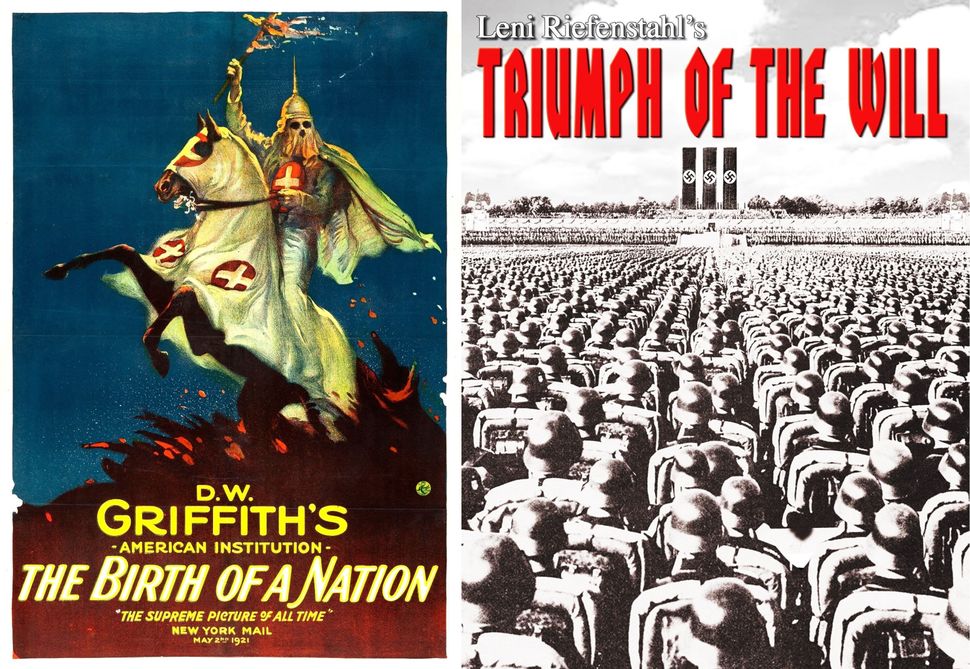
This is very similar to how German filmmaker Leni Riefenstahl employed mind-blowing cinematography in Triumph of the Will (1935) and Olympia (1938), but only to further the Nazi propaganda.
Mani Ratnam’s filmmaking too falls in a similar category. While his films merge the beautiful visuals of PC Sreeram, Santosh Sivan, Rajiv Menon and others with soulful music of Ilaiyaraaja or AR Rahman, what they further are merely right-wing politics.
But unlike DW Griffith or Leni Riefenstahl, Mani Ratnam chooses a much subtler approach, peddling a softer form of Hindutva.
But unfortunately, the subtle promotion of Hindutva ideals is much more dangerous than outright fascist, casteist or propaganda films. Because while it is easy to see the problem in those films and confront them, the subtler approach goes mostly unnoticed and any criticism made against it can be easily dismissed as over-reaction.